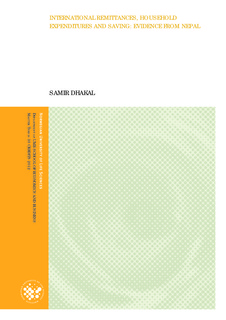| dc.contributor.author | Dhakal, Samir | |
| dc.date.accessioned | 2013-04-10T10:44:14Z | |
| dc.date.available | 2013-04-10T10:44:14Z | |
| dc.date.copyright | 2012 | |
| dc.date.issued | 2013-04-10 | |
| dc.identifier.uri | http://hdl.handle.net/11250/187482 | |
| dc.description.abstract | This thesis examines the general relationship between remittances and household
expenditures and savings in Nepal by doing a cross sectional analysis of the household survey
conducted in 2012 by the researcher. It provides a comprehensive overview of the effect of
remittance on spending behavior by looking at common categories like food, non- food and
education, and the saving behavior of the remittance receiving households against the nonremittance
receiving households by using the matching methods. The study found that the
households which receive remittances and which do not receive remittances are different in
terms of their income sources. The remittance receiving households depend primarily on nonfarm
income like remittances unlike the non- remittance receiving households which depend
on the on farm income for their livings. The remittance receiving households spend more and
save more. The remittance income alone cannot explain the difference in the household
expenditures and savings between the remittance receiving and non- remittance receiving
households. | no_NO |
| dc.language.iso | eng | no_NO |
| dc.publisher | Norwegian University of Life Sciences, Ås | |
| dc.subject | International remittance | no_NO |
| dc.subject | migration | no_NO |
| dc.subject | household saving | no_NO |
| dc.subject | household expenditure | no_NO |
| dc.title | International remittances, household saving and expenditure : evidence from Nepal | no_NO |
| dc.type | Master thesis | no_NO |
| dc.subject.nsi | VDP::Social science: 200::Economics: 210 | no_NO |
| dc.source.pagenumber | 63 | no_NO |
